Oracle 9i Application Server
8.2 Oracle 9i Application Server
Hopefully, you are now beginning to appreciate how the Web can dramatically change how information is used and processed by the data warehouse. Although not a prerequisite, using Oracle 9i Application Server (9iAS) to run all of your business intelligence applications provides you with the complete environment to run e-business intelligence.
Oracle 9i Application Server provides in a single product all the technology you need to build and implement e-business portals, Web services, and transaction-based applications. It supports all the Java, XML, and Web services industry standards and can be used to access both Oracle and nonOracle data.
Included is Oracle's HTTP Server, which is based on the Apache Web Server. It has already been configured and is immediately ready for use. There is also a J2EE (Java 2 Enterprise edition) environment, which is a Java platform designed for the development of applications up to Enterprise size businesses. Using J2EE technologies, you can create an application using Java server pages, servlets, and Enterprise JavaBeans. A Java servlet is a program that, when it receives a request for information from the client, dynamically gets the information from the database and generates a response that can be in HTML or XML and sends that back to the client. JavaServer pages help us develop our servlets, because they allow the developer to easily design and maintain dynamic Web pages by separating the dynamic content from the page layout. Enterprise JavaBeans help the developer by encapsulating business logic, so there is no need to write the code for these functions.
Within Oracle 9iAS you can do development using Java, XML, Perl, and PL/SQL. Oracle 9iAS actually comprises the following products, although you don't have to install all of them.
-
Oracle HTTP Server
-
Oracle 9iAS Reports Services
-
Oracle 9iAS Portal
-
Oracle 9iAS Discoverer
-
Oracle 9iAS Clickstream Intelligence
-
Oracle 9iAS Personalization
-
Oracle 9iAS Forms Services
-
Oracle 9iAS Wireless
-
Oracle 9iAS Web Cache
-
Oracle 9iAS Unified Messaging
-
Oracle 9iAS Security
-
Oracle Internet Directory
-
Oracle 9iAS Containers for J2EE
-
Oracle Enterprise Manager
Now we will begin to see which components you may need to take your data warehouse to the Web. There are many ways that a Web site can be configured, and it is beyond the scope of this book to discuss them here, but typically the Web server will be running on a machine different from the data warehouse.
8.2.1 Why set up a portal?
When the Internet first became popular, a company would talk about its Web site, but now it talks about its portal. A portal is a Web site that provides a lot of information and services. If a Web site is devoted to a specific topic, such as the medical site WebMD (http://www.webmd.com), it is known as a vertical portal. But most portals cover a wide range of subjects, such as Yahoo (http://www.yahoo.com) and are known as horizontal portals.
The portal provides access to this wealth of information, and typically upon your arrival, once you sign in, what you see is customized to meet your needs. For example, when you visit Oracle (http://myoracle.com), shown in Figure 8.1, you will see a Web page completely different from what an Oracle employee will see.
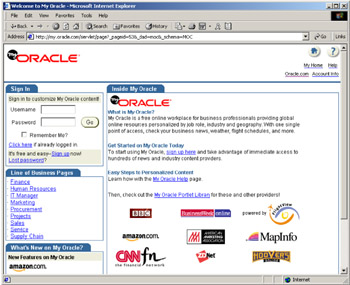
Figure 8.1: Signing into the Oracle portal.
The Oracle employee will be presented with internal company information and access to a wide range of internal systems. Whereas the typical visitor to the Web site will first be presented with the screen shown in Figure 8.2, where visitors are invited to register for Oracle World and are presented with the latest news. Since this is a portal, visitors can now customize this page so that they only see and access information that is of interest to them.
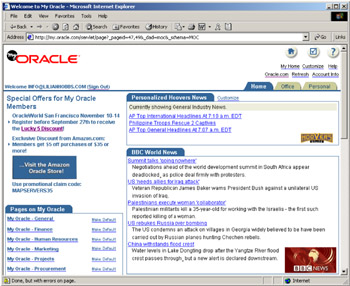
Figure 8.2: Oracle portal—standard view.
So why is a portal relevant to our data warehouse? Well, many companies are now realizing that they need a portal, rather than a Web site, because an internal portal can make it much easier for employees to function, since they have customized access to the information they need to do their job, thus increasing their efficiency. Therefore, consider using a portal to bring the information from your data warehouse to its users. There are two products in 9iAS that make this possible: portal and personalization.
Oracle 9iAS Portal
Oracle 9i Application Server includes Oracle 9iAS Portal, which is software that allows a portal to be developed quickly and easily. Since 9iAS Portal uses the single sign-on authentication that is part of Oracle 9iAS, it provides the mechanism by which access to the information is controlled.
It's very easy to develop applications using 9iAS Portal, even if you are not an experienced developer. It includes a number of wizards, and these can be used to quickly create reports and charts that our users can view. When data is being retrieved from the database, there are also wizards to help you specify the query, or you can define the SQL yourself. The benefits of using 9iAS Portal include the following:
-
It has a framework that is extensible, which integrates all the Web resources.
-
It uses the 9iAS single sign-on.
-
It provides easy access to information.
-
The contents can be personalized.
-
Wizards build applications quickly and with minimal development knowledge.
-
It uses a scalable architecture.
-
It is an integrated solution with Oracle 9i Reports and Discoverer.
-
It publishes information using portlets.
-
It is a self-service publishing facility.
The self-service publishing feature is of interest to our data warehouse users, because it allows them to publish and share documents. Therefore, we can use the portal to create a portlet—that's one of those tabs in Figure 8.2, where we can publish the information from our data warehouse. Using this approach to publish and retrieve information in our data warehouse means that any user within our organization who has permission to access the data can easily view the data. They simply click on the tab and are taken to the report or graph they are interested in.
Although Oracle 9iAS Portal can create simple reports, it is also tightly integrated with Oracle 9i Reports, which we will discuss later in this chapter. Using a wizard, a report created in Oracle 9i Reports can be registered in Oracle 9iAS Portal and published as a portlet. Also, the simple reports created using Portal Reports can also be converted into an Oracle 9i Report. However, since only simple reports and charts can be created within Oracle 9iAS Portal, most people will want to use the sophisticated reporting capabilities in Oracle 9i Reports and then turn that report into a portlet.
With Oracle 9iAS Portals customized pages, users have tremendous control over how they run and see the report. For example, if the report has been set up to accept parameters such as a date and store, users can ask for the data they are interested in, such as only the stores in their area for the past four weeks, and see that version of the report in the portal. Another user could request different data and see his or her own customized version of the report.
Once in the portal, the report contents do not have to remain static. It can be automatically refreshed and republished with the new data, and it is even possible to keep multiple versions of the report, should this be a requirement. Therefore, we can see that the tight integration between Oracle 9iAS Portal and Oracle 9i Reports can provide an incredibly powerful medium for making available the information in our data warehouse.
So far, we have seen how we can use the portal to easily present and retrieve information, but wouldn't it be nice if we could extend this further and customize the information being presented to each visitor to our portal? This can be achieved using Oracle Clickstream and Personalization.
8.2.2 Oracle Personalization
Have you noticed that when you visit some Web sites they remember who you are and then the next time you visit the site, they start recommending specific products, making you aware of specific special offers they think you might be interested in, and even tailoring the products they show to suit your needs? If you have ever wondered how they do it, the answer is through products such as Oracle Personalization and your data warehouse.
What Oracle 9iAS Personalization does is take the information stored in the data warehouse about what customers do each time they visit your Web site. Then, using the data mining technology that is built into Oracle 9iR2, it makes recommendations to customers as to what it thinks they will be interested in. Using Oracle Personalization questions such as the following can be answered:
-
Which product will our customers mostly likely buy?
-
What other items may be bought when they buy this item?
-
What rating may a customer assign to a product?
-
Which items on the hot pick list do we think our customers will purchase?
Once again, we are using all of the information in our data warehouse not only to benefit the customer but hopefully to benefit our business both financially and with respect to customer service.
8.2.3 Clickstream intelligence and the data warehouse
Traditionally, when people think of a data warehouse, they envisage lots of historical data (e.g., all of the telephone calls made during the last year, all the products that were sold, or all of the staff employed over the last ten years). But now we should be looking at our Web site for lots of data that is ideal to be stored inside the warehouse. This data may represent activity over quite a short period of time.
However, even though it may be for a short period of time, there could be a huge amount of data here, because with clickstream data, we are monitoring what the visitors to our Web site are doing. Therefore, if 250,000 people visit our Web site today and they all look at five pages, that could be a lot of information to store. So, another area where our data warehouse can get involved with the Internet is to store all of this clickstream data—that is, what people did when they visited our Web site.
When you run a traditional brick and mortar business, you can easily watch your customers as they peruse your store. You can see them walk in, pick up an item, put it back, and walk out. Or they may go directly to the item and then go to the checkout, or walk up and down the aisles to see what you have today before they go to the checkout. For an e-business, how do you find out what your customers aare doing, since they are probably at home, and you are in your office, maybe thousands of miles away.
Products such as Oracle Clickstream, which is part of Oracle 9iAS, monitor what people do when they visit your Web site. It has been integrated with Oracle 9i Warehouse Builder and Oracle 9iAS Discoverer to enable a complete e-business intelligence system. Now you can identify which pages customers visited, what they added to the shopping cart, and whether or not they waited for pages to load.
There is a wealth of information here that can be used to help improve your business. What better place to store and analyze this data but in the data warehouse? Why a data warehouse? Well, if you are a well-known airline receiving 600,000 visitors a week to your site, you will accumulate a lot of data; this data must be stored if it is to be saved for any period of time. In the past, data warehouses recorded only data about an event that happened, such as the purchase of an item. Now is the time to realize that other types of data can be stored in the data warehouse.
By now you should begin to understand the important role the Web can play in bringing the information contained in our data warehouse to the people who need it. Now we will look at some of the tools that enable us to see this information from our browser.
8.2.4 Oracle Discoverer Reports via the Web
There are a number of tools that can be used to retrieve information from our data warehouse, and a very popular one is Discoverer, because it provides companies with a mechanism for easily accessing the data in their data warehouse and integrating that information with Oracle 9iAS Portal so it can be presented via a browser. Alternatively, you can use Oracle Discoverer Plus or Viewer, which are part of Oracle 9iAS, and they also allow you to run the reports we created in Chapter 6 from your browser.
Using Discoverer Viewer or Plus
In Figure 8.3, we can see one of these reports as executed and viewed by Discoverer Viewer from our browser. Now, in this workbook we have three reports: Total Sales by Customer, Best Customers, and Most Popular Products. Each one is presented as an active link on a tab on the left side of the screen. Therefore, it's very easy for our users to select the report they require.
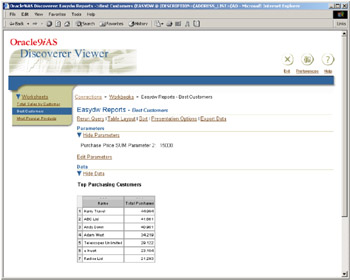
Figure 8.3: Discoverer Viewer Report from our browser.
Although we are using our browser to display the data, the report does not have to be static, since we can interact with the person running the report. If the Most Popular Products report is selected, the screen shown in Figure 8.4 appears, where we are asked the criteria that determine the popularity of a product. In this example, we have said that we are interested in any product where we sold more than 100 units.
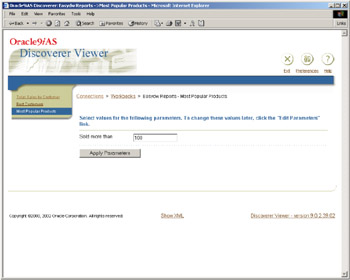
Figure 8.4: Discoverer Viewer—specify reporting criteria.
Discoverer Viewer provides an easy way to retrieve information from your browser. In Figure 8.3, there is some customization of the report that is possible, but when using Viewer, the user can only read the data and there is no possibility that this data can be altered.
Distributing reports to the Web
Discoverer Viewer or Plus are actually running the report via our browser, but what if we just want to publish the report on the Web so that it can be viewed as a static document? This is also possible, and, referring to the workbook where we first created the reports in Chapter 6, this was done using the non-Internet version of Discoverer. But once in Discoverer Plus, we can take any of those reports and share them with other users by exporting the worksheet to a number of formats, including:
-
XML for Oracle Reports
-
Excel
-
HTML, so it can be e-mailed
-
Comma-Separated Values (CSV)
The process for exporting a worksheet or workbook is very straightforward, thanks to the Export Wizard, which is started from the File menu. Simply select which worksheets you want to send to Oracle Reports, and then select whether just a table or a table and a graph are required. Next we must specify the format of our report; we can see those options in Figure 8.5, where a drop-down list of formats is provided. Discoverer Reports to be published on the Web should be exported in Oracle Reports format.
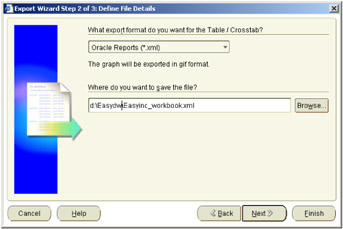
Figure 8.5: Discoverer Plus—Export Wizard—specify output format.
All we now need to do is specify the location for our report; the final screen, which has been omitted from this book, merely asks if the export is to run supervised, which gives you the opportunity to fix any problems that may occur, or unsupervised. Click on the Finish button, and your report is now ready for Oracle Reports.
Reports can also be integrated from Discoverer into Oracle 9iAS Portal, which provides an extremely effective way to deliver customized data to the end users. This is achieved by Oracle 9iAS Discoverer being a portlet provider to Oracle 9iAS Portal. There are two types of portlets that Discoverer can provide:
-
List of workbooks portlets
-
Worksheet portlets, which is an individual worksheet
One of the really nice features is that when the page for the portal is being designed, there can be as many portlets on that page as are needed. Therefore, multiple Discoverer worksheets and graphs can appear on a single portal page. When the user accesses that page, he or she can either select which worksheet is needed by clicking on it, or a user can have worksheets and graphs automatically displayed on the page.
Our end user doesn't even have to worry about whether the data being retrieved via the portal are up-to-date, because when the portlet is designed, you can specify how frequently the portlet should be refreshed. With users being able to customize the Discoverer portlet to their own requirements, using Oracle 9iAS Portal to present Discoverer reports and graphs provides a friendly, easy to use, customized environment.
EAN: 2147483647
Pages: 91